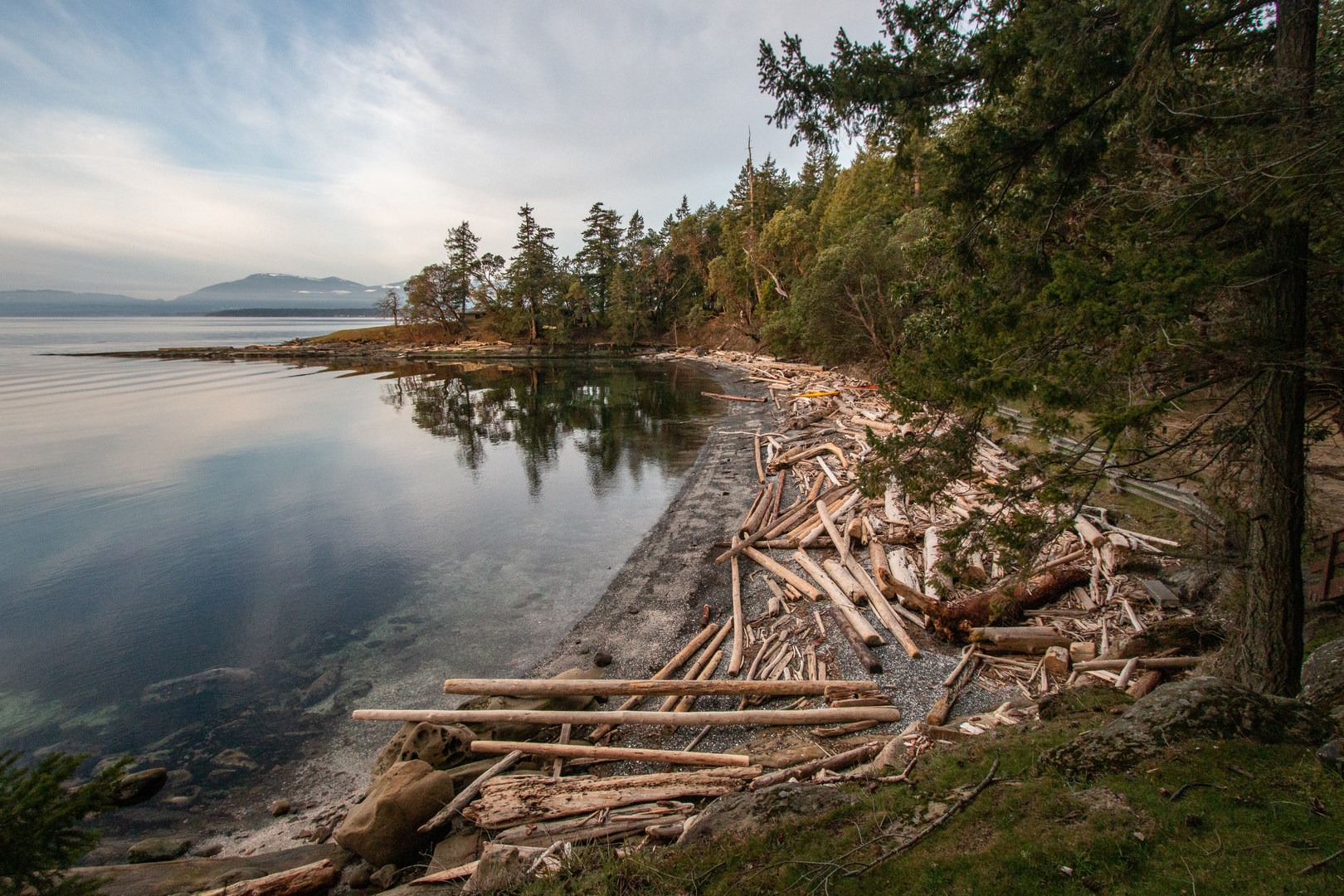You are here
Pirate Cove is a lovely marine provincial park in the southern end of de Courcy Island. Its sordid history has graced the park with a curious name that continues to draw attention. It is a day's paddle from Nanaimo and an even shorter hop from Boat Harbour.
History
The history of Pirate Coves is particularly interesting. In 1927, the area was home to several colonies of the Aquarian Foundation. This apocalyptic cult believed its leader, Edward Arthur Wilson, known to the cult as Brother XII, to be the spirit of an Egyptian 12th Master of Wisdom. His nearly 8,000 followers moved nearby Valdes and the northern tip of de Courcy islands in preparation for the apocalypse. The cult built a farming community across the islands, often with fortifications and gun positions as means to defend from the coming end of the world. They believed their adherence to Brother XII's teachings would protect them. The followers donated huge sums of money, often entire lives savings, to this man, who was meant to procure supplies. According to legend, it was rather converted to gold coins and buried in cedar chests.
The strict conditions in the village coupled with his many extramarital affairs and growing questions of missing funds eventually led to his downfall. When attempts to imprison his dissenting followers failed, Brother XII reacted violently, destroying buildings and blowing up his ship, the Lady Royal. The name Pirates Cove comes from the rumours of buried treasure in the area. There is a 45-minute documentary about the whole story available on YouTube.
There are also several midden sights, suggesting a much older indigenous history that is less well documented. Considering this perfect mooring spot, it's hardly surprising.
Layout
Today, the park is home to campsites, a series of trails, and multiple moorings. If you are coming by kayak, the southern beach makes a much more appealing landing site with softer sand. It is also closer to the campsite. The northern bay is very sheltered. It has mooring rings, two small round docks for smaller (less than 5 m) motorboats for day use.
The bay does not see a lot of flow, so discharging sewage is illegal. Be warned if you plan to swim that this water is often contaminated. The south beach is colder, cleaner, and sandy for the most part. There are also superb sandstone rocks that make for amusing wanderings.
On shore, there is a trail that connects the docks to the water pump and washrooms. A short valley connects the main peninsula to the trail by way of wooden stairs. Above this are the campsites and a series of well-positioned picnic tables overlooking the southern bay, which makes for a beautiful evening meal spot. A set of stairs connects to the trail network that meanders around the wider peninsula. All in all, it's a 30-minute walk to cover the whole park, but there is ample opportunity to stop and explore. The northern tip is the second dock with the best tidal pools at low tide.
Interesting Features
As with many of the islands in this area, their sandstone is exquisite. Paddling around Little Island and de Courcy's west coastlines is worthwhile and beautiful, with many incredible formations. Around the park, there are countless tide pools to check out.
The island makes for an excellent spot for viewing wildlife. Porpoises and orcas are fairly common, with gray and humpback whales often passing through in the summer. In the morning, otters are commonly active. Seals are active all day. Raccoons are a menace, and food should be guarded carefully from these bold thieves. Birdwatchers will find Wilson’s warblers, Pacific-slope flycatchers, black oystercatchers, white-crowned sparrows, and other species breeding in the park. Bald eagles, great blue herons, and scores of others use the park for foraging and resting.
Logistics + Planning
Current Weather: Powered by Dark Sky






























Comments
Sign In and share them.